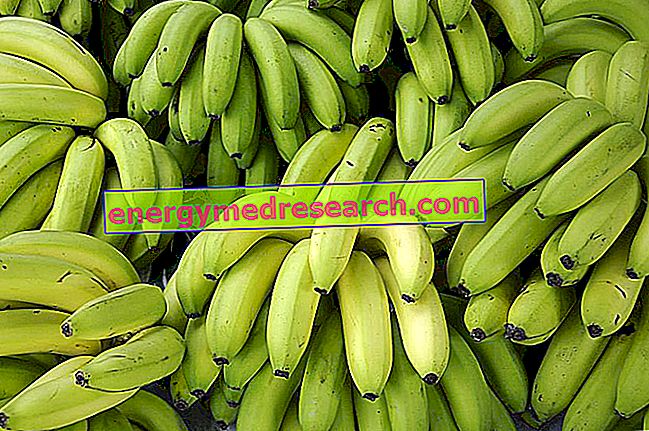
Bananas are a food that contains starch, a basic macro nutrient for many tropical populations.
Depending on the cultivar and maturation, the taste (sweetness) and consistency (softness) of the fruit pulp can vary. Both the peel and the banana pulp can be eaten raw or cooked.
The main aromatic component of fresh bananas is isoamyl acetate, also known as "banana oil", to which butyl acetate and isobutyl acetate are also added .
During the ripening process, bananas produce ethylene gas, which acts like a real plant hormone and indirectly affects the taste of the fruit. Furthermore, ethylene also stimulates the formation of amylase, an enzyme that breaks down starch into semi-complex and simple sugars, thus influencing the taste of the pulp.
Green bananas, that is the less mature ones, contain more starch and therefore have a starchy flavor in addition to a harder consistency. Logically, yellow bananas have a sweeter taste, thanks to the higher concentration of simple and semi-complex carbohydrates. Precisely ethylene gas signals the production of pectinase, an enzyme that breaks down cellular pectin causing softening of the pulp.



